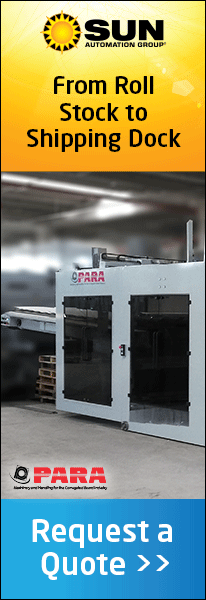An article submitted by Maija Pohjakallio, VP, Climate & Circular Economy, Metsä Group.
As the world contends with ongoing sustainability challenges, the circular economy stands out as one of the key solutions driving the movement forward. As visibility of the concept grows, an increasing number of businesses and organisations, across the globe, are joining the transition.
Progressing the circular economy
The circular economy requires a holistic view, and organisations must consider it an essential tool in creating a more sustainable and brighter future. But what exactly is the circular economy?
To better understand the concept, the Ellen Macarthur Foundation (EMF) definition is a useful tool to explore: “The circular economy is a system where materials never become waste and nature is regenerated. In a circular economy, products and materials are kept in circulation through processes like maintenance, reuse, refurbishment, remanufacture, recycling, and composting.”
According to the EMF, the circular economy is based on three principles:
- Eliminating waste and pollution
- Circulating products and materials (at their highest value)
- Regenerating nature
At Metsä Group, we aim to obey these three principles in everything that we do. To us, a circular economy means a systematic approach which begins with paying attention to the wellbeing of forests. In practice, for example, this means sourcing our wood raw material from sustainably managed northern forests. We’ve also worked hard to ensure that we have consistently sustainable and transparent supply chains.
Taking our efforts to the next level, last spring, we committed to the principles of regenerative forestry. This means that by 2030, we are aiming to have measurable positive impacts in our member-owners’ forests. For example, we have launched a novel forest management service Metsä Group Plus which includes increased amount of biodiversity measures, and we pay a hectare-based bonus for wood raw-material originating from forests where Metsä Group Plus is in use.
Roadmaps to drive transparency
Transparency is a cornerstone of our sustainability efforts. For example, Metsä Board – part of the Metsä Group – has recently published detailed public roadmaps, helping to visualise the measures it will take to achieve the ambitious 2030 targets regarding climate change and water usage. The interactive roadmap comprises of two sections – the journey towards 100% fossil free energy and working towards zero fossil CO2 emissions in production. These comprehensive guides are readily available for anyone interested in understanding our journey and goals.
The transition to sustainable packaging solutions
Moving towards the circular economy means a significant shift in the way we produce, manufacture and use products across the board – and packaging plays an important role in this.
When exploring plastic alternatives, paper-based packaging is emerging as a key player. Metsä Board focuses on lightweighting that aims to maintain the same properties than conventional boards but is produced more efficiently using less raw materials. This approach reduces the CO2 emissions across the value chain
Paper-based packaging has also benefitted from a recyclability perspective as its waste recycling rate is high. According to Statistica, the recycling rate of paper and cardboard packaging waste in the European Union was 81.6% in 2020 and has remained above 80% since 2008.
To make matters more complex, material selection is by no means the only factor to consider. In addition to the raw materials, you must also consider the packaging design, how the product is made the context in which it is used, and the end-of-life options. It’s essential to optimise the process from a value chain and life-cycle perspective.
Fostering success through collaboration
Collaboration – both within the value chain and the broader sector – is one of the most crucial elements in the move towards the circular economy. For example, our work with the 4evergreen alliance highlights our commitment to driving the recycling rate of paper-based packaging solutions to an ambitious 90%.
While industry coalitions are essential, we must also focus heavily on value chain collaboration. The good news is that, over the last ten years, understanding and acceptance of the concept has significantly grown. More businesses are now recognising the benefits of value chain collaboration and putting words into action. For example, we do not have the know-how or opportunities to refine all production side streams ourselves, but with the help of our partners they will come into use.
However, to see further progress in this area, new circular metrics is needed. For example, we need to find ways to measure the use of resources on a system level. Measuring only recycled content and recycling rates of materials is not enough. The ultimate aim of circular economy is to optimise material, energy, information and value streams as a whole to produce positive impacts on nature and society.
Towards regenerative circular economy
There’s no one-size-fits-all solution to sustainability. When it comes to packaging, economic operators need the freedom and the flexibility to choose the best solution for the specific context. Recyclable single-use packaging and reusable packaging are both needed and should be seen as complementary solutions.
As losses and degradation always take place, no material can be reused or recycled forever: new virgin material is always needed in the loops. Virgin renewable raw materials, such as wood, can be supplied to loops according to principles of circular economy, in a regenerative way. Therefore, renewable materials have a specific role in the development of a more regenerative circular economy. When we talk about sustainability, we are usually referring to trying to avoid harming the environment as much as possible. In regenerative activities, the goal is to maximise the positive impacts.
We are in the beginning of our journey towards a regenerative future, but willing to develop continuously and inviting our customers and other stakeholders to join us.




